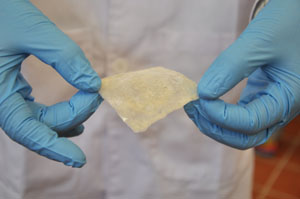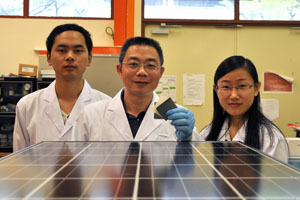
World's first energy-storage membrane outstrips existing rechargeable batteries and supercapacitors
The research team, led by Principal Investigator Dr Xie Xian Ning, used a polystyrene-based polymer to deposit the soft, foldable membrane converted from organic waste which, when sandwiched between and charged by two graphite plates, can store charge at 0.2 farads per square centimetre. This capability was well above the typical upper limit of 1 microfarad per square centimetre for a standard capacitor. The cost involved in energy storage is also drastically reduced with this invention, from about US$7 to store each farad using existing technologies based on liquid electrolytes to about US$0.62 per farad.
Dr Xie said: "Compared to rechargeable batteries and supercapacitors, the proprietary membrane allows for very simple device configuration and low fabrication cost. Moreover, the performance of the membrane surpasses those of rechargeable batteries, such as lithium ion and lead-acid batteries, and supercapacitors."
Supported by grants from the Singapore-MIT Alliance for Research & Technology (SMART) and the National Research Foundation, the research took about one and a half years to reach its current status and the team has also successfully filed a US patent for this novel invention.
The discovery has also attracted the attention of scientific journals worldwide, and was featured in Energy & Environmental Science and highlighted by renowned international journal Nature.
"With the advent of our novel membrane, energy storage technology will be more accessible, affordable, and producible on a large scale. It is also environmentally-friendly and could change the current status of energy technology," Dr Xie said.
Going forward, the team will explore more applications for this efficient energy storage solution. It is also looking into opportunities to work with venture capitalists to commercialise the invention.

The cost-effective and environmentally-friendly energy-storage membrane developed by NUS researchers

(From left) Mr Wang Yuzhan, Dr Xie and Ms Wang Qian who devised the breakthrough invention
Sept. 30, 2011
http://newshub.nus.edu.sg/headlines/0911/membrane_30Sep11.php
